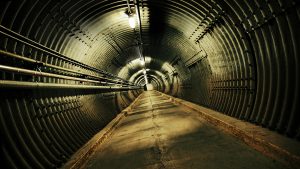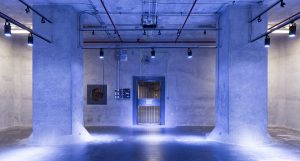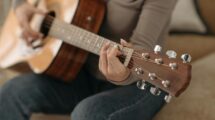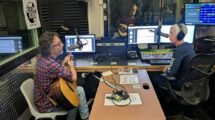The Curious Trekker
By Peter Johansen
PHOTOS: DIEFENBUNKER: CANADA’S COLD WAR MUSEUM
Planning and paranoia at the Diefenbunker

I came of age during the Cold War of the 1950s, scampering under school desks for Emergency Broadcasting System drills. I knew it was serious stuff
but had little more understanding of world politics than, “We’re good. They’re bad.”
I didn’t know, for example, that underneath a windswept knoll in Carp, John Diefenbaker’s government built a 100,000 square foot bunker, which
drills down four storeys below the earth’s surface. The Central Emergency Government Headquarters was meant to withstand an atomic bomb 250 times stronger than the one dropped on Hiroshima. It was where the Ottawa elite — the Governor General, Prime Minister, war cabinet and defence leaders — were to take refuge and govern. It was where the Bank of Canada would secure its gold reserves and where CBC broadcasters would transmit information and reassurance.
Thankfully, the bunker never served those purposes. But until just a quarter-century ago, the armed forces carried out sensitive communications
operations there.
Today, of course, the site is simply known as the Diefenbunker, a nickname for the prime minister who commissioned its construction in 1959. It opened in 1962, on time and within its $40 million budget, the equivalent of about $400 million today. After the Canadian military decommissioned it, public-spirited locals took up the cause of converting the ghostly space into a museum dedicated to the Cold War. Nearly 70,000 now visit annually.

A visit unveils the planning and paranoia of the era.
My pre-pandemic tour started in the 115-metre blast tunnel, designed to deflect shock waves away from the bunker’s entrance. With more than two tonnes of steel, that door isn’t flimsy. The tunnel may be familiar: it’s the setting for the opening minutes of The Sum of All Fears, a 2002 film starring Ben Affleck.
The entry leads to a lead-lined shower where personnel, fully clothed, would rinse off radiation particles. They would then toss their clothes down a
disposal chute and, wearing nothing but a gas mask, wash in a second shower stall. After that, any residual radiation meant a one-way ticket back outside.
I saw how self-contained the bunker was. It had a medical clinic equipped for all operations except open heart or brain surgery — though the equipment, state-of-the-art for its day, might strike some today as primitive instruments of torture. A mess hall, the largest open space in the facility, was gussied up in hospital-issue pastels of turquoise and pink to calm residents’ nerves. A sign provides a less than ringing endorsement of the ration packs served there: “You’re lucky to be alive…so just eat it.”
I visited some of the bedrooms where 565 residents were meant to sleep in shifts around the clock. The prime minister’s suite, with its single cot, was presumably an exception.

But the key operational parts are the most fascinating. In the cabinet room, for example, I learned only a dozen ministers would have made all
government decisions — and in dire circumstances, The nerve centre, however, was where military operations would occur. I saw a situation room, a warning centre and cryptography room. Though equipped with everything from electronic gear to wall-sized maps and briefing boards, they reveal
simple surveillance operations.
My tour left me wondering about the ironies one finds in the Diefenbunker. The facility was designed to protect officials from radiation, but the health centre had a radiation-producing X-ray machine. The claustrophobic would be confined to a tiny room with no inside door handle. The cafeteria’s meat freezer could double as a morgue. The bunker was built to protect politicians, but Denis Lortie, a soldier who killed three persons at the Quebec legislature in 1984, stole his arms from it. The facility was meant to be secret, but an enterprising Toronto journalist photographed 78 newly delivered toilets, belying official claims it was a simple communications base. And the only prime minister to visit, Pierre Trudeau, cut funding soon after he toured.
WANT TO GO?
The museum is at 3929 Carp Road, Carp. From Hwy 417, take exit 144, drive through the village of Carp, and look for a museum sign on the left.
During the pandemic, opening hours are in flux. Check the museum’s website (diefenbunker.ca) for latest details. You must book an assigned time on the website, too. Download an audio guide for self-led tours or join group tours in English or French.
Accessibility continues to improve over the coming year, with wheelchair-accessible washrooms already available. The website provides excellent detail on current mobility challenges.
Admission: Seniors, $16.50. Other prices, from $11 (youth) to $17.50 (adults), with a family rate of $48.50.






